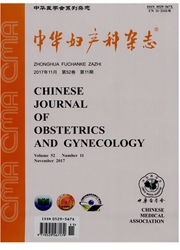

 中文摘要:
中文摘要:
目的探讨速度向量成像技术(VVI)分析新西兰大白兔心肌力学的可行性和正常情况下新西兰大白兔心脏结构力学特点,为研究人类心肌结构力学打下基础。方法新西兰大白兔30只,实验动物于基础状态下行VVI模式的超声心动图检查,采集胸骨旁左心长轴切面和左心二尖瓣水平、乳头肌水平、心尖水平短轴切面的二维动态图像行VVI分析。结果基础状态下兔左心室长轴方向上心肌运动速度峰值心底节段最高,向心尖方向递减,差异有统计学意义(P〈0.05),应变和应变率峰值无明显改变(P〉0.05);短轴方向上同一水平各节段心肌运动速度峰值前间隔和前壁最大,应变和应变率峰值前壁及侧壁大于其他各节段,差异有统计学意义(P〈0.05);左心室收缩期心底部向顺时针方向旋转,心尖部向逆时针方向旋转,舒张期均向反方向解旋,心尖部位的旋转角度、速度和解旋速度均大于心底部(P〈0.05),左心室收缩期扭转角度为(10.76±2.24)°。结论VVI可用于评价新西兰大白兔基础状态下左心室的心肌力学特征,正常情况下其心脏长轴、短轴及扭转运动存在一定规律。
 英文摘要:
英文摘要:
【Objective】 To evaluate myocardial mechanics characteristic of the New Zealand white rabbits in basic condition, and lay the foundation for the study of the human myocardial mechanics. 【Methods】 Thirty New Zealand white rabbits were examined by echocardiography in basic condition. Dynamic cardiac images of left long axis views, short axis views at mitral valve level, papillary muscle level and apex level were collected. All of these images were analyzed using VVI software. 【Results】 In basic condition, longitudinal velocity decreased from basal to apical segment(P 0.05), strain and strain rate did not change(P 0.05); radial velocity in anteroseptal and anterior segment were greater than that in other segments at the same level(PP 0.05), whereas greatest circumferential strain and strain rate located in anterior and lateral segment(P 0.05); rotation of the base and apex of left ventricle in opposite direction during systole and diastole were observed; rotate angle, rotate velocity and recoiling velocity at apical level were greater than that at basal level(P 0.05); twist angle of left ventricle was(10.76 ± 2.24°). 【Conclusion】 VVI can be used to quantitatively evaluate myocardial mechanics in rabbits. Regular patterns of heart motion were found in normal rabbits.
 同期刊论文项目
同期刊论文项目
 同项目期刊论文
同项目期刊论文
 Differences in Left Ventricular Twist Related to Age: Speckle Tracking Echocardiographic Data for He
Differences in Left Ventricular Twist Related to Age: Speckle Tracking Echocardiographic Data for He Quantitative Assessment of Left Ventricular Systolic Function in Patients with Coronary Heart Diseas
Quantitative Assessment of Left Ventricular Systolic Function in Patients with Coronary Heart Diseas Assessment of regional right ventricular longitudinal functions in fetus using velocity vector imagi
Assessment of regional right ventricular longitudinal functions in fetus using velocity vector imagi Assessment of Regional Myocardial Function in Patients with Dilated Cardiomyopathy by Velocity Vecto
Assessment of Regional Myocardial Function in Patients with Dilated Cardiomyopathy by Velocity Vecto 期刊信息
期刊信息
